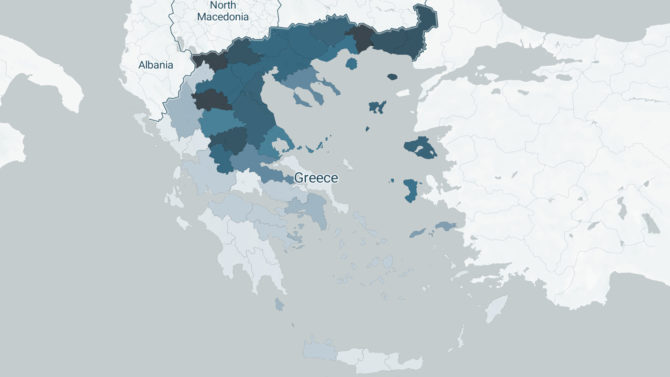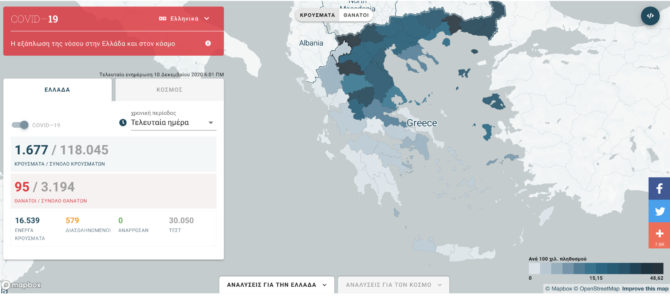iMEdD Lab introduces a new interactive map to provide information on vaccination per Greece’s Regional Unit, using official real-time data obtained from the open data platform unveiled by the Greek government.
How the application monitoring the spread of the disease was created

Work stages, sources/processing of data, tools and limitations regarding the development of iMEdD Lab’s web application tracking the pandemic in Greece and around the world.
On the morning of December 27, 2020, Greece started administering the COVID-19 vaccine to its population, with the first recipient being ICU nurse Efstathia Kampisiouli. Since then, more than 71,000 people have been inoculated against the coronavirus (as of January 15, 2021) in the country; that is, approximately 0.65% of the total population.
In contrast to the policy followed by Greece’s National Public Health Organization (EODY), which publishes epidemiological data in non-editable format (.pdf files, free text, emails), data on vaccinations is published in recognizable format and in a timely manner.
The data is published by Regional Unit and it refers to the number of vaccinations (daily & cumulative), the total number of people who have been vaccinated, as well as the daily difference of administered vaccines.
The data, published on data.gov.gr, is automatically retrieved via API and visualized in real time in a specialized COVID-19 application developed by iMEdD Lab, which was launched in March 2020.
Map visualization is developed based on the number of vaccinated citizens per 100,000 residents. This indicator allows us to compare areas of the country with different population sizes. For example, 1,000 vaccinated citizens per 100,000 people in Central Athens –based on the number of people vaccinated and the population of the area– would mean that, if Athens had 100,000 residents, 1,000 would have been vaccinated.
How to use our COVID 19 application

A step by step guide on how to use our application and integrate the maps and graphs to your own page.
Vaccination across Greece broken down by Regional Unit
So far, the Pfizer-BioNTech vaccine has been rolled out in 27 EU countries, the Moderna vaccine has been approved, and AstraZeneca has applied to the European Medicines Agency (EMA) for authorization of the jab.
By January 20, phase one of Operation “Eleftheria” (Freedom) regarding the vaccination of public and private health care professionals, which was launched on January 4, will have been completed. The National Vaccination Operation against COVID-19 dubbed “Eleftheria” provides for the vaccination of the population in three phases. Phase two, which starts on January 20, 2021, provides for the inoculation of citizens over the age of 85. It is estimated that more than 100,000 people in this age group will receive the jab. Vaccination of people aged 18 or older with no underlying medical conditions is expected to begin in June.
Although the publication of data in data.gov.gr is not accompanied by the necessary documentation explaining the method of data collection and processing, we hold that, as vaccinations progress and citizens receive the second dose, the number of vaccinations (administered doses) should always be greater than the number of vaccine recipients, so as to estimate the percentage of people immune to the virus per Regional Unit. In order to achieve herd immunity, after which authorities can start lifting pandemic restrictions, 60% -70% of the population needs to get vaccinated.
Translation: Anatoli Stavroulopoulou